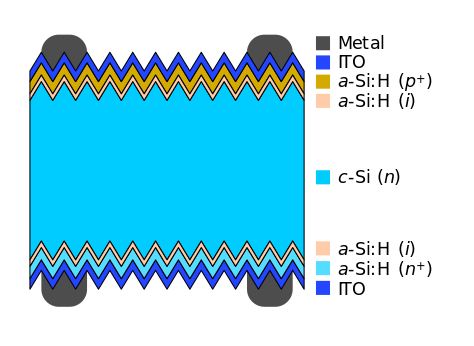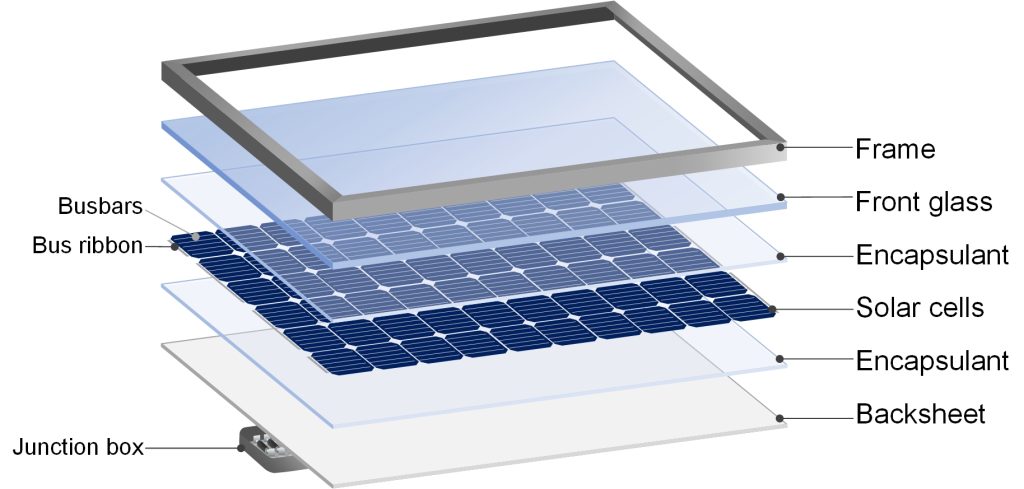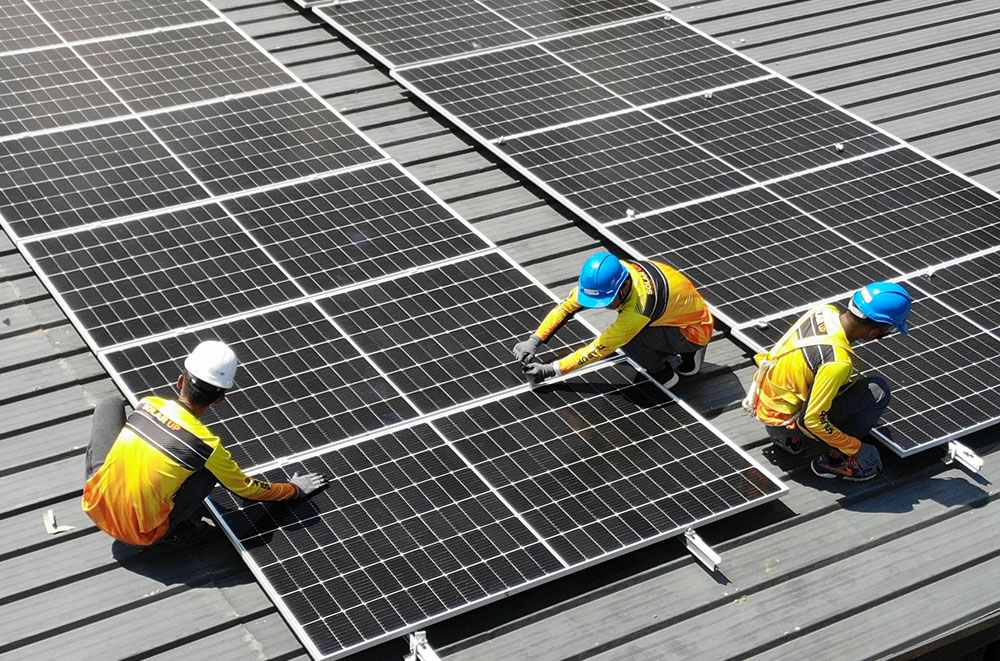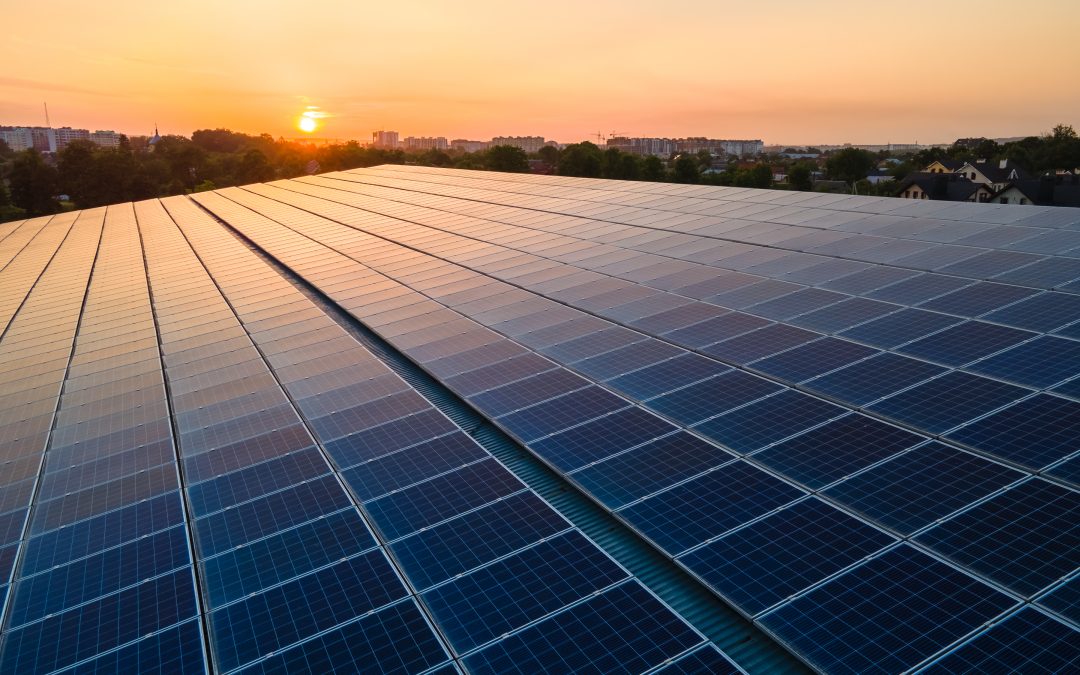Solar panels work through a process called the photovoltaic effect where the sunlight hits a material (which is silicon in this case) and dislodges electrons causing them to move thus generating electricity.
But there’s a lot more that happens in a complete solar power system.
Now you’re probably here since we’re at a time when we need cleaner energy sources due to climate change, and fortunately for us, solar power has emerged as a leading solution especially here in the Philippines.
But how exactly do solar panels work their magic, turning sunlight into electricity that powers our homes and businesses? Let’s explore solar panels and solar power systems and dive into their inner workings, the different types available, and the essential components that make up a solar power system.
How Solar Panels Work: A Step-by-Step Guide
Get this: The Earth is constantly bathed in a ridiculous amount of solar power – like, ten thousand times more than we actually use! On average, the Earth receives 44 quadrillion watts of sunlight per year.
The challenge lies in collecting that power. That’s where solar panels come in to turn those sunbeams into the electricity that powers our homes and devices.
Silicon Power
Solar panels are made up of smaller units called solar cells also known as PV (photovoltaic) cells.
The most common type is made from silicon, the same stuff found in sand. But this isn’t your average beach sand. In solar cells, silicon is transformed into a super-material that can capture sunlight and convert it into electricity.
PV Cell structure

Imagine a solar cell as a sandwich. The filling is made of two different types of silicon: one with extra electrons (n-type) and one with spaces for electrons (p-type). Where these two types meet, a special zone called the p/n junction is created. This is where the magic happens.
Converting Sunlight to Electricity
Sunlight is made up of tiny energy particles called photons. When these photons hit the solar cell, they knock electrons loose from their silicon atoms, creating “holes.” Think of it like a microscopic game of musical chairs – the electrons jump up, leaving behind empty seats.
Now, thanks to the p/n junction, the loose electrons and the holes have a preferred direction to move. Electrons scoot towards one side of the cell, while the holes head to the other. This creates a flow of electricity – a direct current (DC) – that can be harnessed.
A single solar cell doesn’t generate much power, so we string a bunch of them together to make a solar panel. The more cells, the more power! Think of it as a team of tiny energy generators all working together to power your home.

Inverters
As we’ve learned, solar panels produce direct current (DC) electricity. This is a steady flow of electrons in one direction, like the current you get from a battery. However, the electricity we use in our homes and businesses, as well as the power that flows through the electrical grid, is alternating current (AC). AC electricity constantly reverses direction, cycling back and forth many times per second.
Why the difference? AC electricity is easier to transmit over long distances and can be efficiently stepped up or down in voltage using transformers. But for your home appliances to work, the solar-generated DC electricity needs to be converted to AC.
That’s where the inverter comes in. This device “inverts” DC output from your solar panels into usable AC power by turning the DC current on and off and changing the direction around 60 times a second.
There are other steps like filters and shaping the AC electricity, but after that, you’re free to use the electricity it gives out.
The Complete Solar Power System
So, we’ve got our solar panels soaking up the sun and our inverter translating their electricity into a language our homes understand. But there’s more to a solar power system than just these two key players. Let’s take a closer look at the other components that make it all work together:
The Mounts: Giving Panels a Strong Foundation
Solar panels need a safe and sturdy place to rest and soak up the sun. That’s where mounting systems come in. These are the frames and brackets that secure your panels to your roof or the ground. They need to be strong enough to withstand wind, rain, and snow (if it applies), and they also need to be angled just right to maximize sun exposure.
Electrical Components
We usually have lots of wiring into play, but there are other electrical components that play important roles in a solar power system. These include:
- Disconnects: Safety switches that let you shut off the flow of electricity from the panels if needed.
- Grounding Equipment: Protects against electrical surges and shocks.
- Combiner Boxes: Central hubs that combine the output from multiple panels before sending it to the inverter.
- Circuit Breakers: Protect against overloads and electrical faults.
Energy Management
To make a solar power system usable, you have to make sure you can control the amount of electricity that the system gives out and a way to store that electricity, because spoiler alert, the sun isn’t out there all day. Here’s the two main parts that manages your energy:
- Monitoring Systems: These let you track your system’s performance in real-time. You can see how much energy you’re generating, how much you’re using, and even how much you’re selling back to the grid (if you have a net metering agreement). It’s a dashboard for your mini solar power plant.
- Battery Storage: We all know what batteries does. Batteries can provide energy independence and peace of mind, knowing you have a backup power source when you need it. And of course, these days, the monitoring systems are advanced that they can automatically charge the batteries, and some systems can even monitor your usage pattern making sure your batteries have a charge when you need it.
System Types
Lastly, we should talk about the system types:
- Grid-Tied: These systems are connected to the electrical grid. You can use solar power when the sun is shining, and draw power from the grid when it’s not. You can even sell excess power back to the grid.
- Off-Grid: These systems are completely independent from the grid. You rely solely on your solar panels and battery storage for all your energy needs. This is ideal for remote locations or for people who want to be completely self-sufficient.
- Hybrid: These systems can operate connected to the electrical grid or independently, providing uninterrupted power even during blackouts.
A Bright Solar-Powered Future Is Waiting
Solar panels and energy management systems have a long way to go. In fact, most commercial solar panels can only generate 10-20% of the sun’s energy that hits them.
However, people are constantly working to improve solar cell efficiency. Advances in materials science, nanotechnology, and manufacturing processes are leading to new generations of solar panels with increased efficiency.
But despite the current limitations, solar power is still a valuable and growing source of renewable energy. Even with moderate efficiency, solar panels can generate significant amounts of electricity over their lifespan, offsetting the need for fossil fuels and reducing greenhouse gas emissions.

Join the Solar Power Revolution!
If you’re ready to embrace the power of the sun and make a positive impact on both your wallet and the planet, consider joining the solar revolution.
At Solar Up, we’re passionate about helping homeowners and businesses transition to clean, renewable energy here in the Philippines. With seasoned professionals at the helm, we deliver top-notch service and superior results on every project. Our expert team can guide you through the entire process, from assessing your energy needs to designing and installing a custom solar power system that fits your lifestyle and budget.
Ready to take the next step toward a brighter future? Contact Solar Up today by clicking the button below for a free quote and let us show you how easy and rewarding it can be to harness the power of the sun for your home or business.

